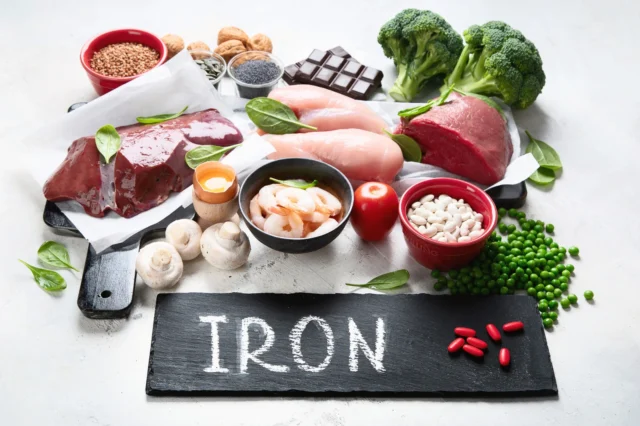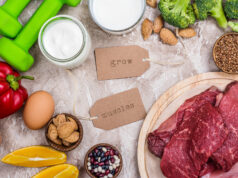foods rich in iron for infants
Ensuring that infants receive a balanced diet is crucial for their growth and development, and incorporating foods rich in iron for infants, such as pureed meats, fortified cereals, and leafy green vegetables, can help prevent iron deficiency and support healthy cognitive and physical development during this critical stage of life.
Iron is crucial for infants as it supports brain development, oxygen transport in the blood, and immune function; while they are born with iron stores lasting about 4–6 months, they require dietary iron afterward to prevent iron deficiency anemia, which can cause developmental delays, fatigue, weakened immunity, and impaired cognitive function.

Breastfed babies may need iron supplements or iron-rich foods earlier, as breast milk is low in iron. Formula-fed babies typically get enough iron from fortified formulas.
Iron-Rich Foods for Infants (6+ Months)
1. Iron-Fortified Baby Cereals
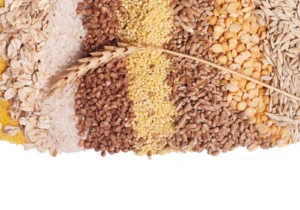
Iron-fortified cereals, such as rice cereal, oatmeal, or multigrain cereals, are often the first recommended iron-rich foods for infants due to their easy digestibility and low risk of allergies; they should be served by mixing with breast milk, formula, or water to achieve a smooth consistency, ensuring a gentle introduction to solid foods while supporting healthy growth and development.
2. Pureed Meats
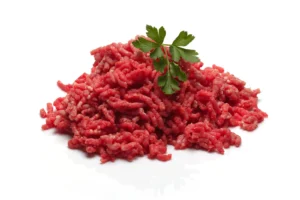
Meats such as chicken, turkey, beef, and lamb are excellent sources of heme iron, which is more easily absorbed by the body than non-heme iron; to serve, cook them thoroughly, puree until smooth, and mix with vegetables or cereals to enhance both flavor and nutritional value, and minerals for overall health.
3. Legumes
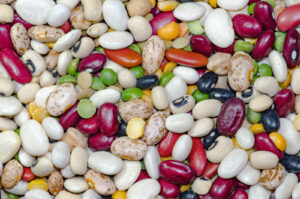
Legumes such as lentils, chickpeas, black beans, and kidney beans are rich in non-heme iron, making them an excellent plant-based option for iron intake; they should be cooked until very soft and can be pureed or mashed, and mixed with vegetables or cereals for added nutrition.
4. Tofu
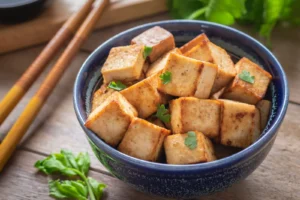
Tofu, a great source of iron and protein, especially for vegetarian families, can be served by mashing or pureeing soft or silken tofu and mixing it with fruits or vegetables for a nutritious meal.
5. Leafy Greens

Spinach, kale, and Swiss chard are rich in iron, and their absorption is enhanced when paired with vitamin C; to serve, steam and puree these greens, then mix them with other foods like sweet potatoes or cereals for a nutritious boost. Adding citrus fruits, bell peppers, or tomatoes to the mix can further increase vitamin C intake, optimizing iron absorption and promoting better overall health.
6. Egg Yolks
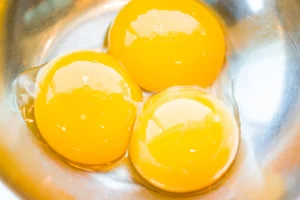
To serve, hard-boil the egg, remove the yolk, and mash it with breast milk, formula, or avocado, as egg yolks are a great source of iron and healthy fats, while egg whites should be avoided until 1 year old due to potential allergy risks. Additionally, introducing egg yolk early can help with nutrient absorption and development, but it’s important to monitor for any signs of sensitivity or reaction when introducing new foods to infants.
7. Fish

Salmon or sardines (boneless and well-cooked) are great for brain development as they provide heme iron and omega-3 fatty acids, and can be served by flaking the fish and mashing it with vegetables or cereals, making it a nutritious and easy-to-serve option for children or anyone seeking to boost their cognitive health.
8. Sweet Potatoes
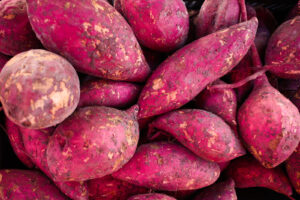
Sweet potatoes can be baked or steamed, then mashed or pureed, and are an excellent source of iron, along with vitamin C, which enhances the body’s ability to absorb iron, making them a nutritious addition to any meal.
9. Dried Fruits (Pureed)

Dried fruits like prunes, apricots, and raisins are high in iron and fiber, which can aid digestion, and can be served by soaking them in water to soften before pureeing and mixing with cereals or yogurt (if introduced), while quinoa, a complete protein and good source of iron, can be cooked until soft, mashed or pureed, and mixed with vegetables or fruits for a nutritious meal.
Tips for Maximizing Iron Absorption
1. Pair with Vitamin C : Serve iron-rich foods with vitamin C-rich foods to enhance absorption. Examples:
- Iron-fortified cereal with mashed strawberries.
- Pureed spinach with mashed oranges or sweet potatoes.
2. Avoid Iron Blockers : Certain foods can inhibit iron absorption. Avoid serving iron-rich foods with:
- Dairy (calcium interferes with iron absorption).
- Tea or coffee (tannins block iron absorption).
3. Cook in Cast Iron : Cooking acidic foods (like tomatoes) in cast iron pots can increase iron content in the food.
4. Introduce Gradually : Start with small amounts of iron-rich foods and gradually increase as your baby gets used to them.
5. Monitor for Allergies : Introduce one new food at a time and wait 3–5 days to check for allergic reactions.
Sample Iron-Rich Meal Plan for Infants
For a nutritious day, start with a breakfast of iron-fortified oatmeal with pureed peaches for vitamin C, followed by a lunch of pureed chicken with mashed sweet potatoes and steamed spinach, complemented by a snack of mashed avocado with cooked quinoa, and finish with a wholesome dinner of lentil puree with mashed carrots and a side of pureed prunes for added fiber and antioxidants. This balanced meal plan supports iron absorption, provides essential vitamins, healthy fats, and a good mix of protein and fiber throughout the day.
You should consult a pediatrician if your baby shows signs of iron deficiency, such as pale skin, fatigue, or poor appetite, or if you’re unsure about introducing certain foods or need guidance on supplements to ensure proper nutrition and growth. Additionally, it’s important to seek advice if your baby experiences unusual symptoms, has feeding difficulties, or is not meeting developmental milestones.

